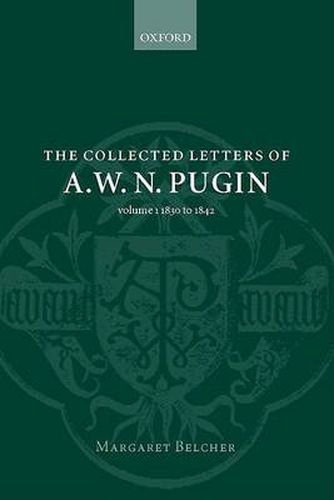Readings Newsletter
Become a Readings Member to make your shopping experience even easier.
Sign in or sign up for free!
You’re not far away from qualifying for FREE standard shipping within Australia
You’ve qualified for FREE standard shipping within Australia
The cart is loading…






The importance of A. W. N. Pugin (1812-52) in the history of the Gothic Revival, in the development of ecclesiology, in the origins of the Arts and Crafts movement, and in architectural theory is incontestable. A leading British architect who was also a designer of furniture, silver, textiles, stained glass, and jewellery, he is one of the most significant figures of the mid-nineteenth century and one of the greatest designers. His correspondence is important because it provides more insight into the man and more information about his work than any other source. It cuts a cross-section through early Victorian society: his correspondents range from earls and bishops to painters and tradesmen. The letters illuminate major public events like the Oxford Movement, the (Roman) Catholic revival, and the Great Exhibition of 1851. They are vigorous, direct, often witty and provide an invaluable source for architectural and religio-historical research. Dr Belcher’s very thorough research generally transforms what has often been a blank area, drawing together many sources. By 1842, when this volume ends, Pugin is established in his career. He has written books, designed buildings, found his faith, and made himself known.
$9.00 standard shipping within Australia
FREE standard shipping within Australia for orders over $100.00
Express & International shipping calculated at checkout
The importance of A. W. N. Pugin (1812-52) in the history of the Gothic Revival, in the development of ecclesiology, in the origins of the Arts and Crafts movement, and in architectural theory is incontestable. A leading British architect who was also a designer of furniture, silver, textiles, stained glass, and jewellery, he is one of the most significant figures of the mid-nineteenth century and one of the greatest designers. His correspondence is important because it provides more insight into the man and more information about his work than any other source. It cuts a cross-section through early Victorian society: his correspondents range from earls and bishops to painters and tradesmen. The letters illuminate major public events like the Oxford Movement, the (Roman) Catholic revival, and the Great Exhibition of 1851. They are vigorous, direct, often witty and provide an invaluable source for architectural and religio-historical research. Dr Belcher’s very thorough research generally transforms what has often been a blank area, drawing together many sources. By 1842, when this volume ends, Pugin is established in his career. He has written books, designed buildings, found his faith, and made himself known.